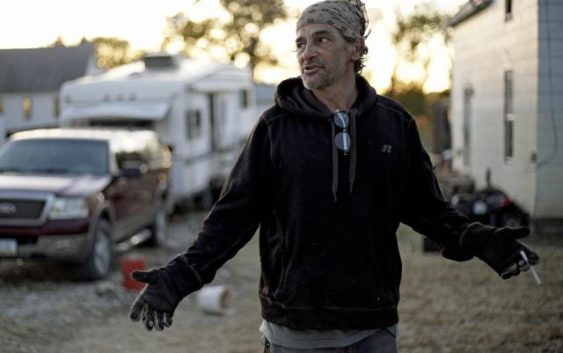- 'I made a terrible decision' | Video shows boaters in the middle of Chambers County tornado
- 'Everybody has to come out and do their part' | People pitch in to help tornado ravaged school in Alvin prepare temporary campus
- District collecting donations after tornado destroys elementary school in Alvin
- Lowe’s to distribute free tornado cleanup supplies in Kingwood Tuesday
- North Carolina extends FEMA aid deadline for Hurricane Helene victims
Prolonged Missouri River flooding could last all winter

OMAHA, Neb. — Flooding along the Missouri River has stretched on for seven months in places and could endure through the winter, leaving some Upper Midwest farmland and possibly some homes encased in ice.
There are several reasons for the flooding, including high levels along the river, saturated ground and broken levees. And with the forecasters predicting a wetter-than-normal winter, it’s possible the flooding could continue in some places all the way until spring, when the normal flood season begins.
“There’s no end in sight. None at all,” said Tom Bullock, who hasn’t been able to live in his northwestern Missouri home since March because floodwaters cut off access to it.
In Missouri’s Holt County, where Bullock serves as emergency management director, roughly 30,000 acres (12,140 hectares) of the 95,000 acres (38,445 hectares) that flooded last spring remain underwater, and at least some of that floodwater is likely to freeze in place this winter.
Similar conditions exist in places along the lower Missouri River, where broken levees will likely take several years to repair.
Nearly every levee in Holt County has multiple breaches and many haven’t even been examined yet. Repairs aren’t likely to start on most of the area’s levees until next year, Bullock said.
One key contributor to the flooding is that the river remains high because the U.S. Army Corps of Engineers is still releasing massive amounts of water from upstream dams to clear space in the reservoirs to handle next spring’s flooding.
The Corps said it has been releasing more than twice the normal amount of water from most of the dams along the river and will likely continue at that pace into mid-December.
This year has been exceptionally wet in the Missouri River basin, and the amount of water flowing down the river through the year is expected to match the 2011 record of 61 million acre-feet (75.24 billion cubic meters). That is why the releases must remain high until the river freezes over in winter.
Other rivers and lakes in the region are also swollen. For example, parts of the James River in the Dakotas may not drop below flood stage between now and the start of next year’s flood season. About 50,000 sandbags are in place to protect homes and other structures near the river in Jamestown, North Dakota.
“I have never seen the water anywhere near this in the fall,” said Bill Anderson, who lives near the James in Montpelier, North Dakota. “If we get a bunch of snow, it’s not going to be pretty.”
South Dakota officials are also closely watching Lake Andes, which is the largest natural water body in the state and has been overflowing for months. The lake borders the Yankton Sioux Indian Reservation and is located near the Missouri River and Fort Randall Dam.
For the last six months, residents in the town of Lake Andes and surrounding areas have had to deal with high water that has washed out roads, flooded basements and inundated graves, said Kip Spotted Eagle, the tribe’s historic preservation director. The problem is exacerbated by a 1930s aqueduct that is not properly draining water from the lake to the Missouri River, he said.
“The water is going to freeze and it’s going to stay there and it’s going to be a big problem,” said Spotted Eagle, who lives in Wagner. “Families and kids are going to walk across that ice because it’s a shortcut to town. It’s a recipe for disaster.”
At this point, any significant rain or snow in the region could lead to new flooding because the soil is too saturated to absorb most of it and many rivers are high, according to the National Weather Service.
“It wouldn’t take a big precipitation event to renew the flooding in places,” said Kevin Low, a weather service hydrologist at the Missouri River Basin River Forecast Center.
The latest long-term winter forecast from the U.S. Climate Prediction Center predicts that much of the northern United States, including the northern Great Plains, is likely to experience a wetter-than-normal winter. That could mean there will be above-average snowpack in the Missouri River’s watershed by spring.
“It’s just not a very good setup,” Low said.
That’s bad news for farmers such as Gene Walter, whose low-lying land north of Council Bluffs, Iowa, was underwater for most of this year. Walter still can’t work on most of his land because even though the floodwaters have partly receded, it is still too muddy.
Crop insurance will give Walter about 75 percent of his normal income, but this year has been full of additional expenses related to flood damage, so “the financial drain has been unbelievable,” Walter said.
“We’re just tired, he said. “We’ve been beat up so much. We’re just tired.”
___
Associated Press writer Dave Kolpack in Fargo, North Dakota, contributed to this report.